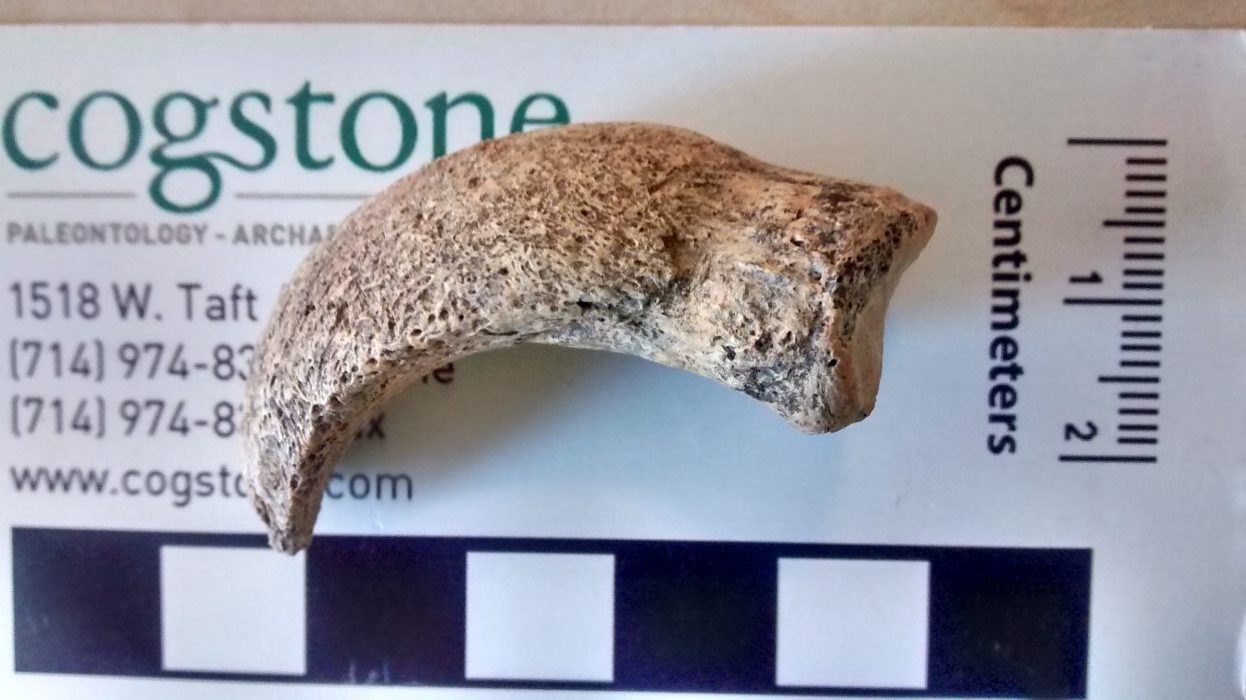The Mysterious Claw of Akko
Strange claw found at Tel Akko by Justin Lev Tov our Archeozoology expert
This season at Tell Akko, I, with the aid of colleague Liora Horwitz (National Natural History Collections, Hebrew University) resolved a mystery from the 2015 season. Near the end of last season, a gigantic claw (see pic) — the Akko Claw — was excavated from Nick Pumphrey’s area, QQ3. I was mystified, and took it to the Hebrew University, comparing it to birds of prey, crocodiles, sea turtles and other creatures. I also compared with an ostrich. None of these things fitted ‘my’ bone quite right, not even the ostrich. I mulled this over all year long during the off season, sending the picture to various stumped archaeological and paleontological colleagues. I was even starting to ponder the reality of Near Eastern mythological creatures out of desperation — how about a griffon? Maybe a roc (I have images of a B movie version of Sinbad and the Seven Seas ingrained in my head – I saw it as a kid, and I recall that some of his sailors were taken away by such a giant bird).
This season, Liora Horwitz visited the tel, and brought with her (knowing of the problem) a set of modern ostrich claw bones. We looked, but weren’t quite satisfied. Liora borrowed the archaeological claw to study it further in Jerusalem. There, she noticed, under a microscope, that it had been somewhat polished and cut a bit here and there. The ostrich was very close morphologically and so it must be an ostrich – there is no other bird in the greater Eurasian-African region of that size. A subspecies of ostrich used to inhabit Israel and neighboring countries, and many years ago I identified Roman-era ostrich bones from the site of Caesarea (a site to Akko’s south).
The skeleton which Liora and I were able to compare the Akko Claw with was the sub-Saharan variety, but perhaps some of the difficulty we had in identifying the bone as ostrich were due to subspecies differences. Next step will be to drop by either Harvard’s natural history museum or that of the UK, a couple of the only institutions that house skeletons of the ostrich which formerly inhabited this region, Struthio camelus syriaca. Unfortunately I’ve no plans to be in either place anytime soon: anyone heading in those directions and have room in their suitcase for an ostrich claw?
In the past, evidently, intrepid hunters or the wealthy who could employ them could eat ostrich. Today in Israel one can order ostrich steaks in upper echelon restaurants. Ostrich. It’s the other red meat.[/vc_column_text][/vc_column][/vc_row]
